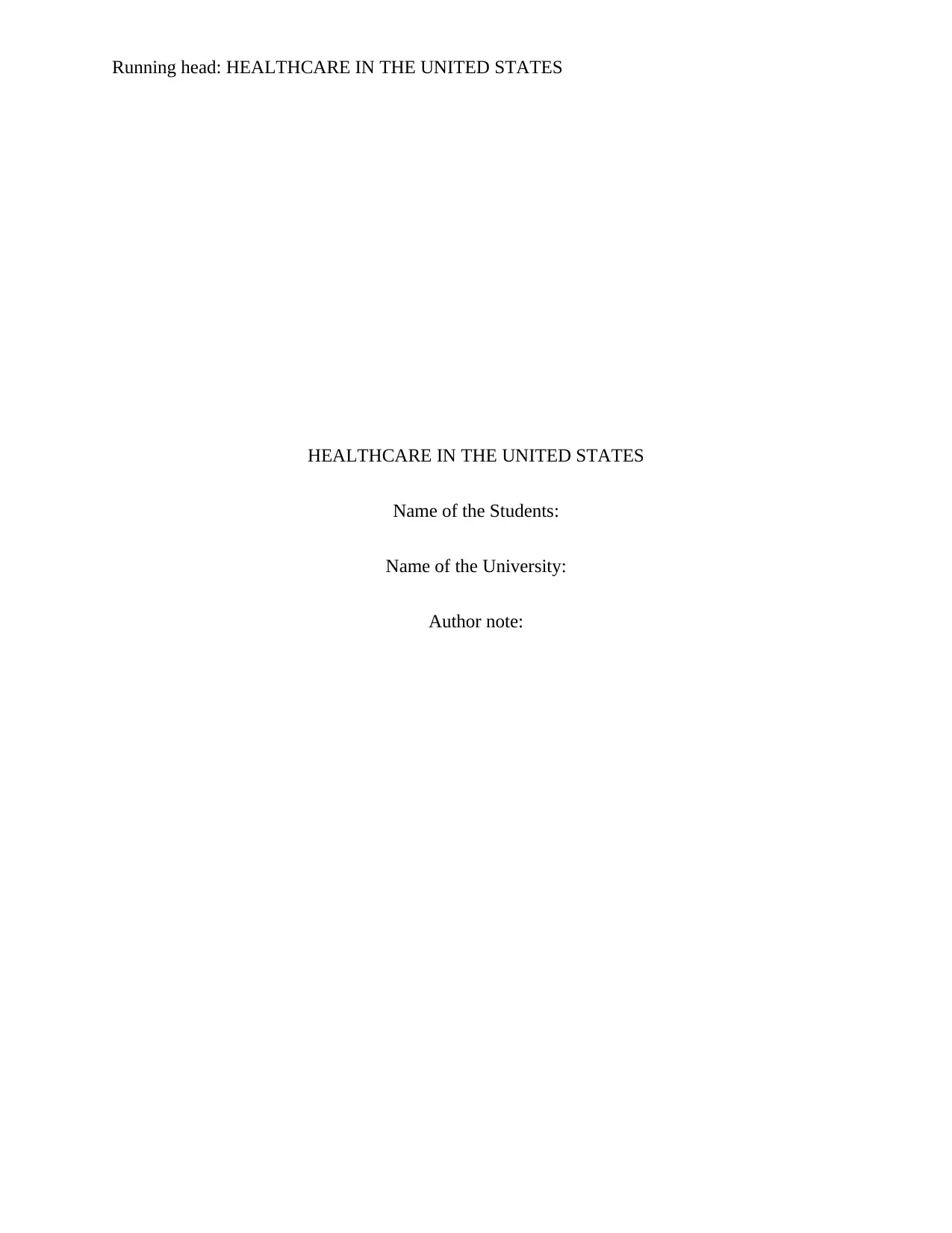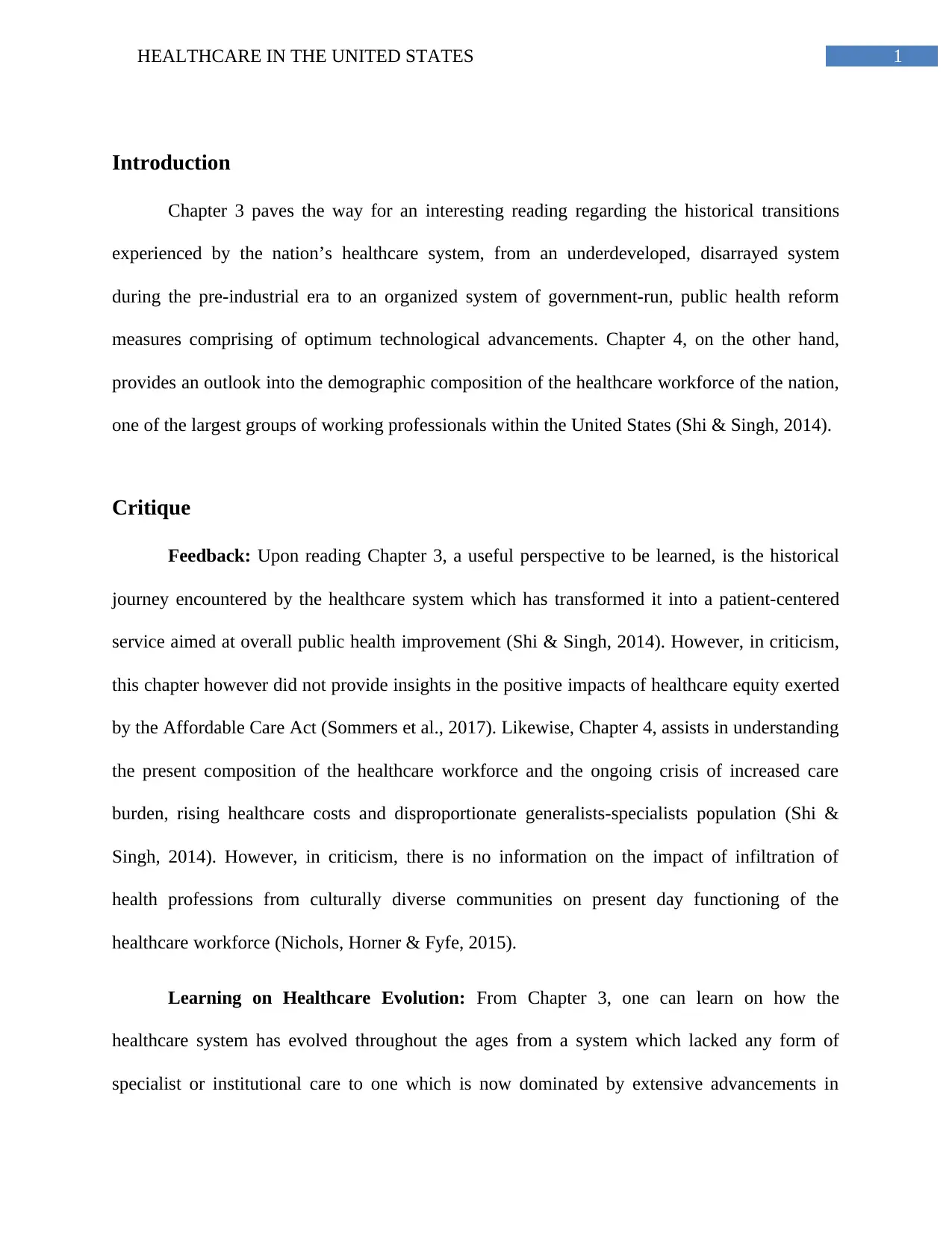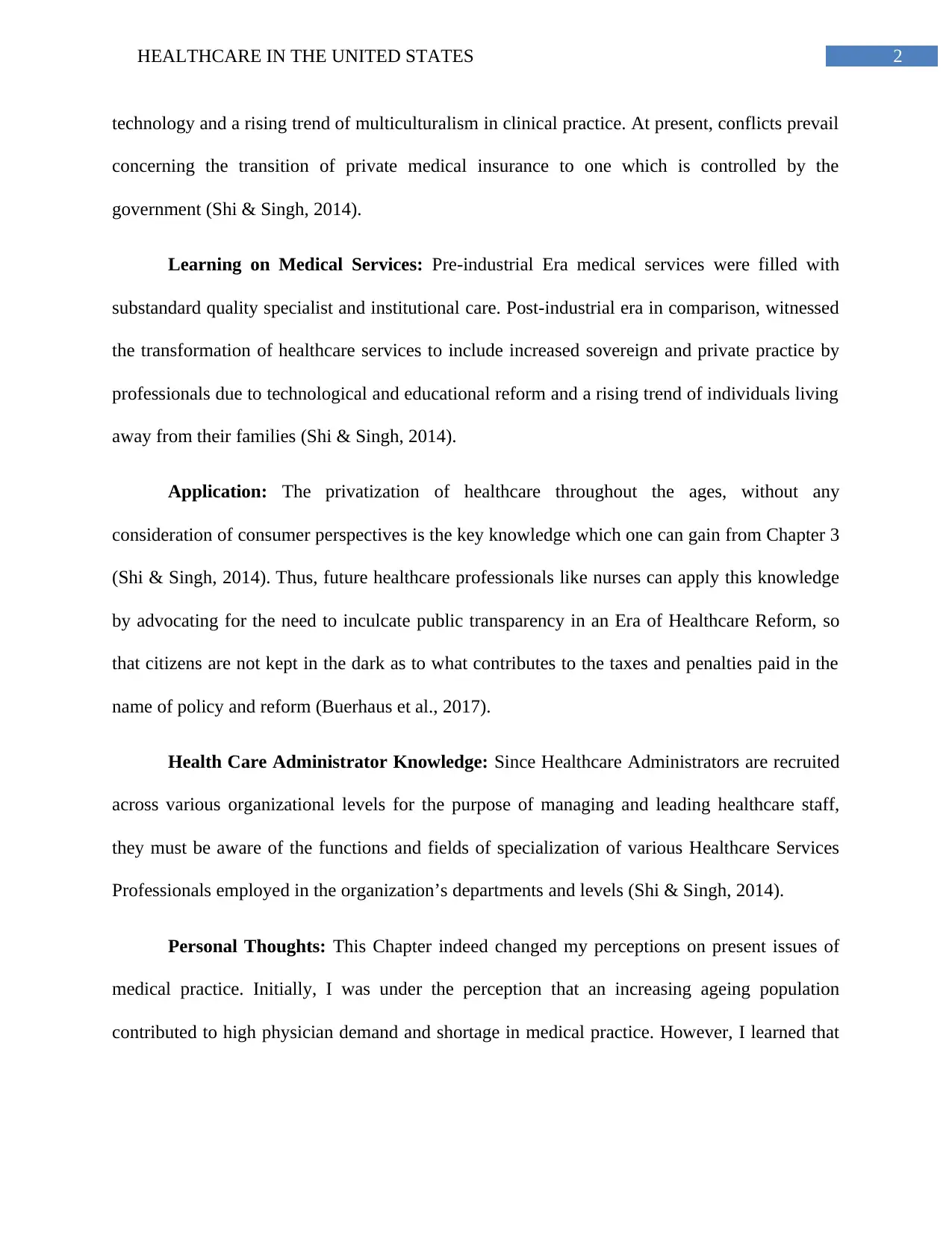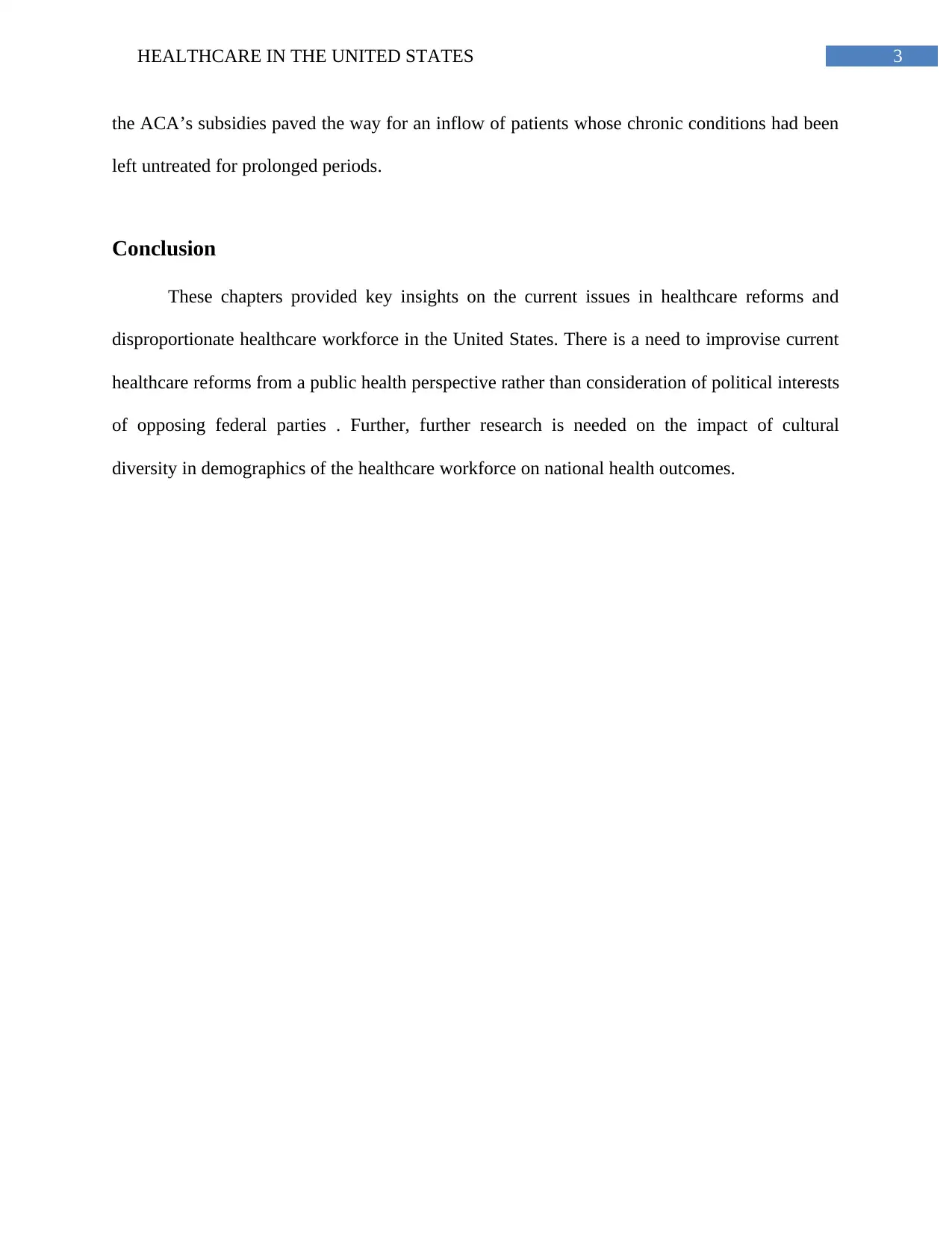Critical Analysis of US Healthcare System: Chapters 3 and 4
VerifiedAdded on 2022/11/14
|5
|889
|86
Homework Assignment
AI Summary
This assignment is a critical reflection paper analyzing the US healthcare system, based on chapters 3 and 4 of a textbook. The paper begins with a brief overview of the chapters, which discuss the historical transitions of the healthcare system from the pre-industrial era to the present, and the demographic composition of the healthcare workforce. The critique section provides feedback on the chapters, highlighting the historical journey of the healthcare system and the present composition of the healthcare workforce. The paper then explores learning on healthcare evolution and medical services, including the privatization of healthcare. The application section discusses how future healthcare professionals can apply the knowledge gained to advocate for public transparency in healthcare reform. The paper also covers the knowledge required by healthcare administrators. The author shares personal thoughts on the impact of the Affordable Care Act (ACA) and concludes by emphasizing the need for improvements in healthcare reforms and further research on the impact of cultural diversity in the healthcare workforce. The assignment also includes references to supporting literature.
1 out of 5












![[object Object]](/_next/static/media/star-bottom.7253800d.svg)